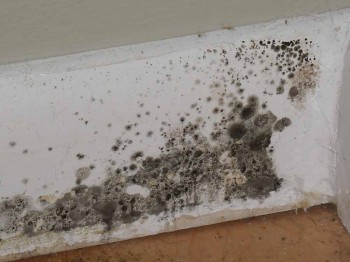Crystalline SilicaCrystalline silica is ubiquitous in the environment and is a basic component of soil, sand and rocks.
Prolonged exposure to fine (respirable) crystalline silica dust that may be produced by a range of industrial and environmental activities and is known to cause the lung disease Silicosis. Construction workers are particularly at risk with activities such as concrete cutting and abrasive blasting, mining, quarrying, foundry work etc. Crystalline Silica is composed of 3 polymorphs, Quartz , Cristobalite and Tridymite, Quartz being the most common. CES is able to test for the presence of crystalline Quartz and Cristobalite. Tridymite is rarely found in the occupational environment and as such is not usually included in testing regimes. Quartz and Cristobalite |
||
Indoor Air QualityMoulds and dust are common contributors to unhealthy indoor air as are pollutants from tobacco smoke, cooking and heating. Emission from synthetic materials used in modern furnishing and surface treatments such as paints and varnishes are undesirable in the indoor environment. Moulds (fungi) are common in the air and are found both indoors and outdoors. Moulds are decomposters, breaking down organic material. They reproduce by releasing microscopic spores into the air which can enter homes through doors and windows, cracks and vents, and may be tracked into a home on clothing, animal fur etc. Moulds need moisture to grow. In a damp house they can cause significant structural issues as they thrive on damp cellulose rich material such as timber, paper and carpets etc. Send us an email or complete the general enquiry form with some details about your concerns. |
||
MouldsMoulds are fungi that are found almost everywhere, inside and out all year round. Moulds are decomposers, breaking down organic matter, and can be various colours including white, green, red or black. Moulds reproduce by releasing microscopic spores into the air, which can enter homes through windows, doors, cracks, and vents. Moulds need moisture to grow. Controlling moisture sources in your home is the most important step you can take to ensure your home remains mould free. What are the health effects of exposure to mould spores in the home?
Mould spores are released into the air by movement within the building and handling of contaminated material. Exposure to the spores are known to trigger allergic reactions such as sneezing, coughing, wheezing, headaches, itchy skin and general fatigue. These reactions may become chronic if exposure is prolonged. Sensitivity to mould exposure may vary between individuals, children, the elderly and persons with already compromised health may be most effected. Controlling the presence of moisture in your home and providing good ventilation is the most important step you can take to ensure you have a healthy home. How do I clean up mould in my home?Any treatment of mould should begin with stopping the water coming into the area, whether it is from a leak, condensation, excessive humidity, or flooding. If an area is cleaned, but the moisture problem remains, the mould will return. Common sources of indoor moisture include: steam from showers and cooking; wet clothes drying indoors or clothes dryers that are not vented to the outside; flooding; leaky roofs or walls; plumbing leaks; overflow from gutters; overflow from sinks or sewers. Cleaning will temporarily increase the amount of mould and mould spores in the air and some moulds may also irritate the skin. Contact a specialist who can provide mould remediation services for further information. An article in Body and Soul magazine explains how household mould can be a health hazard. What health effects can moulds cause?Toxic spores are released into the atmosphere by air movement and the handling of contaminated material. These spores can cause adverse health effects by producing toxic substances known as mycotoxins. Once released, toxic spores must come into contact with the skin or be inhaled before symptoms can develop. Not everyone exposed to the spores will develop symptoms. Exposure to toxic moulds may irritate skin, eyes, nose, and throat, resulting in allergy-like symptoms such as difficulty in breathing, runny nose, and watery eyes. Other symptoms such as fatigue and headache have also been reported.
Individuals who are allergic to moulds could experience asthmatic attacks upon exposure to moulds.
Those exposed to Stachybotrys have additionally experienced burning in the nose, nose bleeds, severe coughing, and impairment of the immune system. Stachybotrys does not cause infection and is not spread from person to person. People with weakened immune systems are particularly susceptible to mould-related illness and should not work in mould-contaminated areas.
Toxic Mould: What is Stachybotrys?In buildings with water damage or ongoing moisture problems, certain types of "water-loving" moulds may reproduce to higher than normal levels and potentially cause adverse health effects. Stachybotrys chartarum (formerly known as Stachybotrys atra) is of particular concern because it can be found in large colonies and can cause adverse health effects. Stachybotris (black mould) is a toxic mould which commonly grows in damp conditions, even when dry and no longer actively growing the mycotoxins present in the dust residues may still be a problem. Stachybotris is usually presents as a black growth, typically on bathroom walls, the lining on curtains. Growth may also be hidden inside wall cavities. Stachybotrys appears as small black patches and grows well on water-soaked cellulose material such as wallpaper, ceiling tiles and insulation containing paper. In addition to Stachybotrys, individuals living or working in water-damaged buildings may be exposed to other types of toxic moulds such as Fusarium, Aspergillus, and Penicillium. CES can carry out mould spore and tape sampling for analysis. Please email us with your enquiry. |
||

 NZ OWNED AND OPERATED
NZ OWNED AND OPERATED